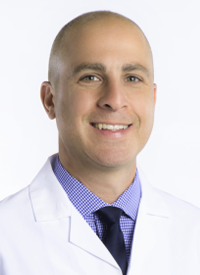Later Toxicities Linked to Bone Marrow Transplant Highlight Necessity of Thorough Survivorship Care for Patients With AML
Individuals with AML who underwent a bone marrow transplant are at an increased risk of developing subsequent neoplasms, and other chronic health conditions.
Saro H. Armenian, DO, MPH

Patients with acute myeloid leukemia (AML) who have undergone bone marrow transplant (BMT) may be at an increased risk of subsequent neoplasms, diabetes, cataracts, venous thromboembolism, or joint replacements, according to findings published in the Journal of Clinical Oncology. Further, BMT survivors have a history of chronic graft-vs-host-disease (cGVHD), their chance of developing these chronic conditions increases significantly, underscoring the value of close monitoring and multidisciplinary survivorship care in the posttransplant setting.
At 20 years posttransplant, the incidence of severe or life-threatening conditions was 68% among BMT survivors. Compared with their siblings, BMT survivors were significantly more likely to have a grade 3 or 4 chronic health condition (54.9% vs 28.5%) and significantly more likely to have multiple conditions (23.9% vs 7.8%; P < .001). Moreover, survivors were more likely to experience poor general health (odds ratio [OR], 3.8; 95% CI, 2.8-5.1), limited activity (OR, 3.7; 95% CI, 3.0-4.5), and functional impairment (OR, 2.9; 95% CI, 2.3-3.6).
“This study provides a global assessment of the burden of morbidity in survivors of AML treated with BMT and finds that, compared with unaffected individuals, BMT survivors are at increased risk for severe/life-threatening health-related complications across nearly all domains,” wrote lead author Saro H. Armenian, pediatric hematologist oncologist and director of the Center for Survivorship and Outcomes with the Hematologic Malignancies Research institute at City of Hope, and co-investigators. “The overall burden of chronic conditions increases sharply with longer follow-up, contributing to a rising incidence of non-relapse mortality.”
Bone marrow transplantation has become a standard treatment for many patients with AML, as it has been established as a curative treatment option. In the United States, the number of patients with AML who undergo a BMT each year is estimated to be around 3,500 and thanks to improvements in transplantation strategies, supportive care, and increased donor source availability, the number of patients with AML continue to increase annually, with more older patients now able to receive this treatment.
It is anticipated that the number of survivors treated with a bone marrow transplant will surpass 40,000 by 2030, thus, ensuring that BMTS survivors are able to live long and healthy lives after their transplant is becoming a critical component of leukemia care.
Previous studies have attempted to characterize the later effects of BMT are generally limited to patients who underwent BMT during their childhood years and were primarily centered on qualities affecting health-related quality of life rather than morbidity. The objective behind this study, therefore, was to understand the associated between BMT-related risk factors and chronic health conditions among BMT recipients, as well as define the overall and cause-specific late mortality rate on survivors throughout various points post-transplant.
Investigators assessed 840 BMT survivors and 1,310 siblings, the mean number of years between BMT and questionnaire completion was 8.2 years. Most patients (86.1%) had undergone allogenic BMT as opposed to autologous BMT. Fifty-two percent of patients had receive a nonmyeloablative or reduced-intensity conditioning. Melphalan- or fludarabine-based regimens were the most popular conditioning (51.0%), followed by a total-body irradiation -based regimen (38.7%).
At 10 years of follow-up, the cumulative incidence of severe, life-threatening, or fatal chronic health conditions was 55% among AML survivors. Specifically, the percentage of patients with subsequent malignant neoplasm was 29.5%, 15.6% developed cataracts, 10.1% required joint replacement, 8.3% experienced venous thromboembolism (8.3%), and 6.8% developed diabetes. Among patients who developed subsequent malignant neoplasm, the most common manifestations included skin cancer or melanoma (68.9%), breast cancer (6.7%), and colon cancer (1.8%).
According to a multivariable, analysis, patients with a history of cGVHD were also more likely to develop grade 3 or worse conditions (HR, 1.3; 95% CI, 1.0-1.6), as well as multiple grade 3 or worse conditions (HR, 2.4; 95% CI, 1.6-3.5).
Moreover, the 5-year survival rate among patients who survived at least 2 years posttransplant was 76.4%. The rate of relapse-related mortality (RRM) was shown to plateau at 30%, although the rate of non-RRM continued to increase, overlapping with RRM at 12 years post BMT and reaching nearly 50% by 30 years posttransplant.
The most common causes of death for those who died in the 2 years following transplant were primary disease (43.8%) and infection (21.3%). In comparison, for 15-year and 20-year survivors, subsequent malignant neoplasm (16.5% vs 21.4%, respectively) and cardiovascular disease (16.5% vs 16.7%, respectively) represented the greatest mortality risks.
“These findings may inform evidence-based health screening recommendations that account for the evolving pattern of morbidity and mortality over time for BMT survivors,” study authors concluded. “These findings support a long-term need for multidisciplinary management of patients with a history of cGVHD, setting the stage for screening, early detection, and interventions to mitigate the risk of adverse health outcomes.”
Reference
Armenian SH, Chen Y, Hageman L, et al. Burden of long-term morbidity borne by survivors of acute myeloid leukemia treated with blood or marrow transplantation: the results of the BMT survivor study. J Clin Oncol. 2022;40(28):3278-3288. doi:10.1200/JCO.21.02829


